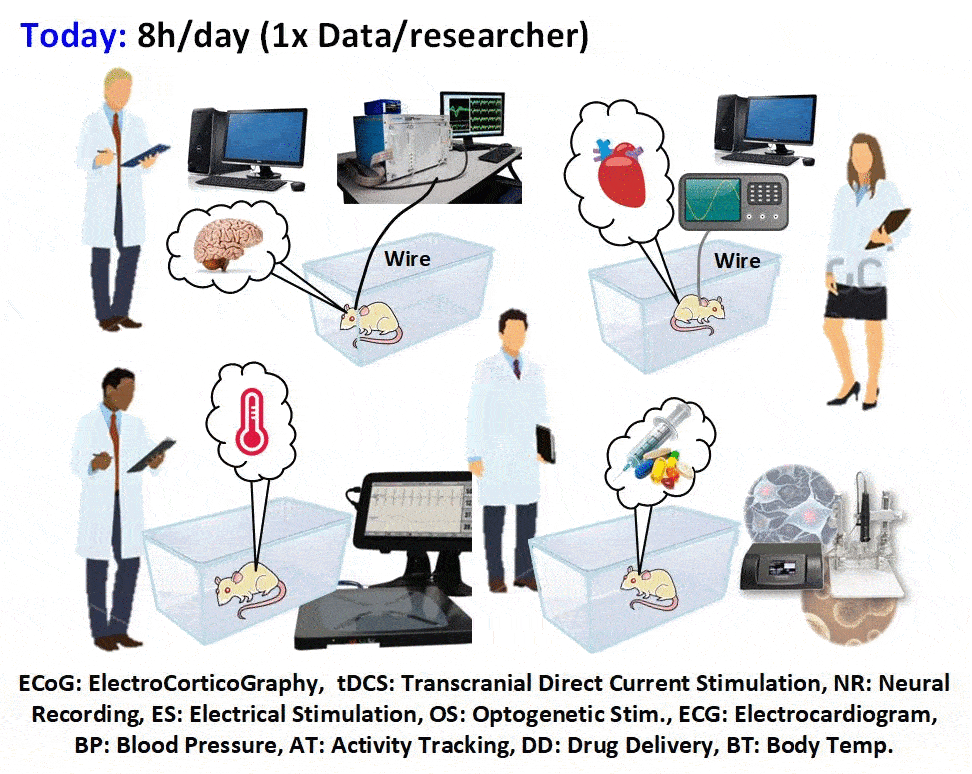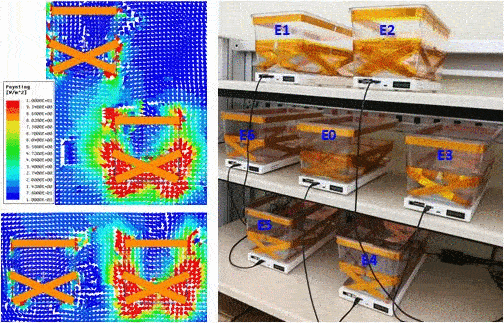
This work presents a high-throughput and scalable wirelessly-powered smart arena for behavioral experiments on freely behaving animals made of multiple EnerCage Homecage (HC) systems, operating in parallel in a way that they can fit in standard racks that are commonly used in animal facilities. The proposed system, which is referred to as the multi-EnerCage-HC (mEHC), increases the volume of data that can be collected from more animal subjects, while lowering the cost and duration of experiments as well as stress-induced bias by minimizing the involvement of human operators. Thus improving the quality, reproducibility, and statistical power of experiment outcomes and saving precious lab space. We have modeled and simulated the interactions between electromagnetic fields generated by multiple EnerCage-HC units within the mEHC system considering mutual coils’ couplings. We have utilized that model to find a suitable arrangement of the EnerCage-HC units in the mEHC system that would lower the coupling among adjacent units down to a level that would avoid bifurcation in the resonance frequency of each unit. Moreover, a closed-loop power control mechanism dynamically adjusts the transmitted power in each unit to compensate for the fluctuations in the headstage or implant received power due to subject movements. The mEHC system is also equipped with an auto-tuning mechanism to compensate for the resonance frequency shifts caused by displacement of homecages. We have implemented the first mEHC prototype with seven EnerCage-HC units plus a GUI software for control, data acquisition, and representation of the acquired data, and compared the theoretical, simulation, and measurement results. Experiment outcomes demonstrate robust wireless power and data transmissions capabilities of this system within the noisy lab environment.

